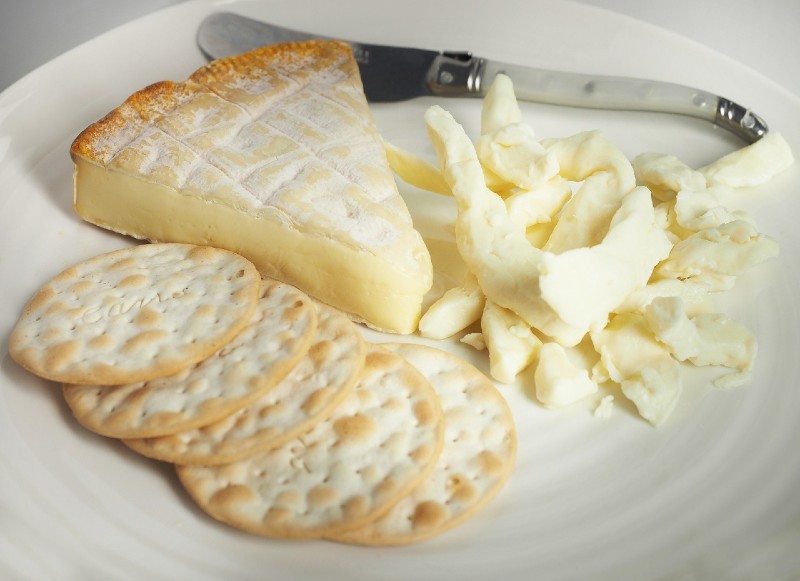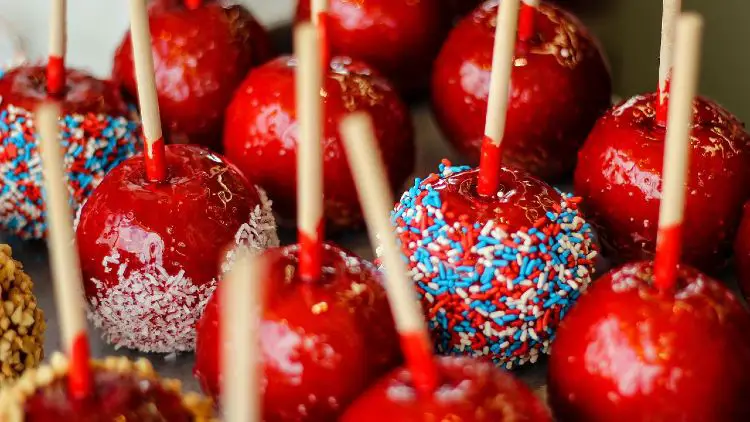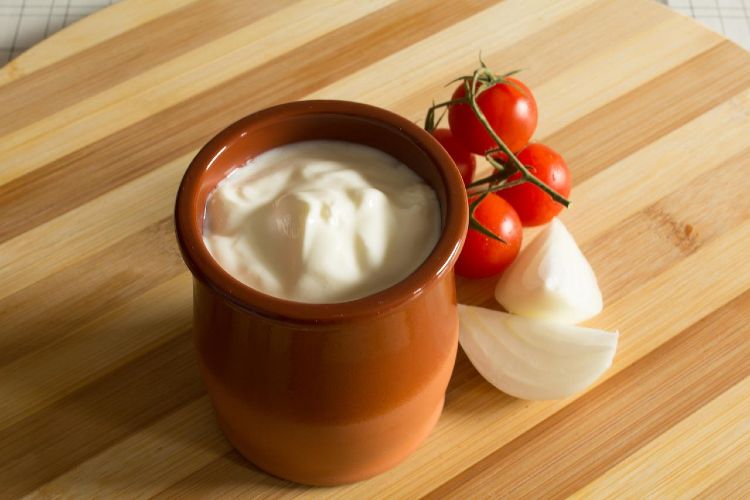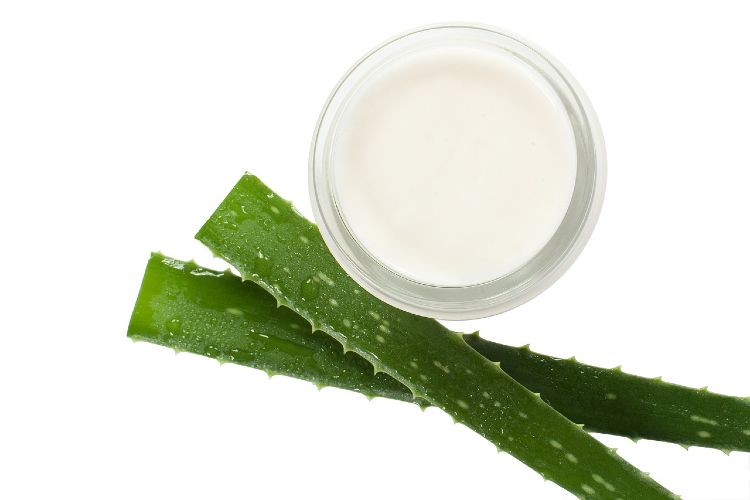From Cashews to Camembert: Exploring The Best Brie Cheese Substitutes!
Brie cheese, with its soft, creamy texture and delicate flavor, is a renowned cheese that originated in the Île-de-France region of France. The history of Brie cheese dates back to the 8th century, making it one of the oldest types of French cheese still in production today.
Legend has it that Charlemagne, the medieval Emperor of the Franks, fell in love with Brie cheese and declared it the “King of Cheeses.” The cheese was later popularized during the reign of King Louis XVI in the 18th century when it was served at the King’s banquets, further enhancing its prestige.
Characteristics and Flavor Profile of Brie Cheese
Brie cheese is characterized by its soft, edible rind and a pale, creamy interior that oozes with buttery richness when ripe.
Made from cow’s milk, it undergoes a unique aging process that allows the cheese to develop its distinct flavor and aroma.
As Brie cheese ages, its flavors become more pronounced, ranging from mild and slightly nutty when young to more pungent and earthy when matured.
The rind of Brie cheese is often described as bloomy or soft-ripened, owing to the white mold (Penicillium candidum) that forms on the surface during the aging process.
This mold contributes to the cheese’s characteristic velvety exterior and imparts subtle mushroom notes to its flavor.
Culinary Uses and Popularity of Brie Cheese in Various Dishes
Brie cheese’s versatility makes it a favorite among chefs and food enthusiasts worldwide. Its smooth, creamy texture and delicate flavor lend themselves well to various culinary applications. Here are some popular uses of Brie cheese:
Cheese Boards
Brie is often served on cheese platters alongside fruits, nuts, and crusty bread, making it a delightful addition to any gathering or party.
Appetizers
Baked Brie, wrapped in puff pastry and topped with sweet or savory accompaniments, is a beloved appetizer that adds elegance to any occasion.
Sandwiches and Wraps
Sliced Brie can elevate sandwiches and wraps with its luscious creaminess and subtle tang.
Salads
When cubed or sliced, Brie can be a luxurious addition to salads, especially those featuring fresh greens, fruits, and nuts.
Main Courses
Brie cheese can be melted into sauces, soups, and pasta dishes, infusing them with a rich and decadent flavor.
Desserts
In the realm of sweet treats, Brie can be enjoyed with honey, drizzled over fresh fruits, or even spread on crackers with jam for a delightful dessert or snack.
With its storied history and culinary adaptability, Brie cheese has earned its place as a cherished dairy delight appreciated by connoisseurs and food lovers alike.
However, for various reasons, some individuals seek replacement of Brie cheese, whether for dietary, accessibility, or cost considerations. In the following sections, we’ll explore number of substitutes that can recreate the magic of Brie cheese while accommodating diverse preferences and needs.
Reasons for Seeking Brie Cheese Replacement
Dietary Restrictions and Health Considerations
As much as Brie cheese is beloved for its taste and texture, it may not be suitable for everyone. Some individuals have dietary restrictions or health conditions that require them to avoid certain ingredients found in Brie cheese. The primary concerns include:
Lactose Intolerance
Brie cheese, like most dairy products, contains lactose, a natural sugar found in milk. Individuals with lactose intolerance lack the necessary enzyme (lactase) to break down lactose, leading to digestive discomfort. As a result, they seek lactose-free cheese alternatives.
Dairy Allergies
For those with dairy allergies, consuming Brie cheese can trigger adverse reactions ranging from mild discomfort to severe allergic responses. Finding non-dairy substitutes becomes essential to avoid potential health risks.
Vegan and Plant-Based Diets
The growing popularity of vegan and plant-based diets has led many individuals to avoid animal-derived products, including traditional dairy cheese like Brie. As such, they look for plant-based alternatives that deliver similar flavors and textures without compromising their dietary principles.
Availability and Accessibility of Brie Cheese in Different Regions
Brie cheese, being a specialty product, might not be widely available in certain regions or countries. Smaller towns or remote areas might have limited access to imported cheeses, and local varieties might not accurately replicate the taste and characteristics of traditional Brie.
Additionally, some countries have strict import regulations on dairy products, making it challenging to acquire authentic Brie cheese. This scarcity can prompt individuals to explore local substitutes that are more readily accessible.
Cost-Effectiveness of Substitutes Compared to Brie Cheese
Authentic Brie cheese, especially the high-quality varieties, can be relatively expensive due to factors such as production methods, aging processes, and import costs. As a result, individuals with budget constraints might seek more cost-effective alternatives that offer comparable taste and versatility.
Finding suitable substitutes for Brie cheese can address these various concerns, allowing individuals to enjoy delicious cheese options that align with their dietary needs, are locally available, and fit within their budget.
Cheese Varieties as Brie Cheese Substitutes
While plant-based alternatives provide excellent options for those seeking non-dairy substitutes, there are several traditional cheese varieties that share similar characteristics with Brie cheese. These cheeses can serve as excellent replacements in various dishes and recipes. Let’s explore some of these delightful alternatives:
Camembert Cheese
Camembert cheese, like Brie, hails from France and originates from Normandy. While both cheeses share similarities in texture and flavor, there are subtle differences. Camembert tends to be slightly smaller and thicker than Brie, with a more robust, earthy flavor profile.
Camembert as a Direct Replacement for Brie in Recipes
Due to their resemblance, Camembert can be used as a direct substitute for Brie in many dishes. Whether melted over warm bread or baked in puff pastry, Camembert offers a rich and creamy experience that complements a variety of culinary creations.
Triple Cream Cheese
Triple cream cheeses, such as Brillat-Savarin and Delice de Bourgogne, are incredibly indulgent with a butterfat content of around 75%. This high-fat content contributes to their irresistibly creamy texture, making them a luscious alternative to Brie.
Unique Flavors and Culinary Pairings
Triple cream cheeses boast a decadent flavor profile that is even richer and more buttery than Brie. These cheeses pair wonderfully with fresh fruits, honey, and crusty bread, making them a luxurious addition to cheese boards and appetizer platters.
Robiola Cheese
Robiola cheese is an Italian soft-ripened cheese that shares similarities with Brie in terms of texture and aging process. Made from cow, sheep, or goat’s milk, Robiola is creamy and mild, with subtle variations based on the milk used.
Blending Robiola into Dishes That Traditionally Use Brie
Robiola can be a delightful substitute for Brie in various recipes. Its mild flavor allows it to complement other ingredients without overpowering them, making it a versatile option for salads, sandwiches, and pasta dishes.
Reblochon Cheese
Originating from the French Alps, Reblochon is a soft, washed-rind cheese made from cow’s milk. It shares similarities with Brie in terms of its creamy texture and buttery flavors. When ripe, Reblochon develops a rich and nutty taste, making it an excellent replacement for Brie in various recipes.
Livarot Cheese
Hailing from Normandy, Livarot is a distinctively pungent cheese with a washed rind. While it has a stronger aroma than Brie, its creamy texture and earthy flavors make it a flavorful substitute in recipes that call for Brie.
Manchego Cheese:
Originating from Spain, Manchego is a sheep’s milk cheese with a firm texture and nutty flavor. While different from Brie, its creaminess and distinctive taste make it a delightful alternative in certain dishes, especially those with Spanish influences.
Tetilla Cheese
Tetilla is a soft, creamy cheese from Galicia, Spain, with a mild flavor and a distinct breast-like shape. Its delicate and buttery taste allows it to be used as a Brie substitute in salads, sandwiches, and appetizers.
Taleggio Cheese
Hailing from Lombardy, Italy, Taleggio is a semi-soft cheese with a distinctive fruity aroma and tangy flavor. Its creamy texture and unique taste make it an intriguing substitute for Brie in various recipes, especially when melted.
Stracchino Cheese
Also known as Crescenza, Stracchino is a soft and spreadable cheese originating from Northern Italy. Its mild, milky flavor and creamy consistency make it an excellent alternative to Brie, particularly in sandwiches and pasta dishes.
Plant-Based Vegan and Non-Dairy Brie Cheese Replacements
As the demand for plant-based alternatives grows, the market has responded with an array of dairy-free cheese options, including substitutes for Brie cheese. These plant-based alternatives aim to replicate the creamy texture and delicate flavors of traditional Brie while being suitable for vegans, those with lactose intolerance, and individuals seeking to reduce their dairy consumption. Here are some popular plant-based Brie cheese substitutes:
Cashew-Based Brie Cheese
Recipe and Preparation Methods
Cashew-based Brie cheese is a homemade option that uses soaked cashews as the primary ingredient. The cashews are blended with water, nutritional yeast, lemon juice, garlic, and salt to create a smooth, creamy texture. This mixture is then aged, allowing it to develop a mild tang and characteristic Brie-like flavors.
Texture, Flavor, and Suitability for Different Dishes
Cashew-based Brie cheese typically achieves a velvety and creamy texture, akin to traditional Brie. Its flavor profile often features nutty undertones with a subtle tang reminiscent of the original cheese. It can be sliced, melted, or spread, making it suitable for cheese platters, sandwiches, and gourmet recipes.
Almond-Based Brie Cheese
Recipe and Preparation Methods
Almond-based Brie cheese is another plant-based alternative that utilizes soaked almonds as the main ingredient. The almonds are blended with water, nutritional yeast, white miso paste, lemon juice, and other seasonings to create a rich, creamy cheese base. After blending, the mixture is cultured and aged to develop its distinct flavors.
Similarities and Differences Compared to Traditional Brie
Almond-based Brie cheese often boasts a smooth and creamy texture, similar to conventional Brie. Its flavor profile can have a mildly nutty and tangy taste, making it reminiscent of its dairy counterpart. This alternative offers a delicious option for those seeking a non-dairy alternative that still captures the essence of Brie cheese.
Soy-Based Brie Cheese
Soy-based Brie cheese is readily available in some specialty stores and supermarkets. It is often made from soy milk, which is coagulated and aged to achieve the desired texture and flavors. Additionally, some homemade recipes call for soy yogurt or tofu as the base to create a Brie-like consistency.
Taste, Texture, and Culinary Applications
Soy-based Brie cheese tends to have a creamy texture and a slightly tangy flavor, resembling traditional Brie cheese. Its versatility allows it to be used in various culinary applications, including sandwiches, appetizers, and vegan cheese platters.
Coconut-Based Cheeses
Coconut oil and coconut cream can be used to create a rich, dairy-free cheese substitute. This option often comes with a subtle hint of coconut flavor and offers a creamy, meltable texture perfect for cooking.
Blended Nut Cheeses
By blending various nuts like macadamias, cashews, or almonds with nutritional yeast and other flavorings, a variety of textures and flavors can be achieved. These nut blends offer gourmet vegan alternatives that can closely mimic Brie’s characteristics.
Commercial Vegan Cheese Brands
Many brands now offer dairy-free cheese alternatives, with options made from pea protein, nuts, or other plant-based ingredients. Some popular brands include Daiya, Violife, and Chao, providing ready-made options that are widely available.
Homemade Vegan Cheese Alternatives
For those who prefer a more hands-on approach, homemade vegan cheese alternatives can be crafted using ingredients like nuts, nutritional yeast, agar-agar, or tapioca starch.
Tips for Selecting and Using Brie Cheese Substitutes
Finding the perfect Brie cheese substitute involves considering various factors, such as taste preferences, dietary needs, and culinary applications. Whether you opt for plant-based alternatives, other cheese varieties, or regional substitutes, here are some useful tips to help you select and use Brie cheese substitutes effectively:
Factors to Consider When Choosing a Substitute
Flavor Profile
Consider the flavor profile of the substitute and how it complements the dish you intend to prepare. Some substitutes may have a milder or stronger taste compared to traditional Brie, which can impact the overall flavor of your recipe.
Texture
Take note of the texture of the substitute. For recipes that require a creamy and melty texture, opt for alternatives that achieve similar qualities to Brie.
Dietary Needs
Ensure the chosen substitute aligns with your dietary requirements, whether it be vegan, lactose-free, or gluten-free, among others.
Pairing Suggestions for Different Substitutes and Dishes
Cheese Boards
When creating cheese boards or platters, experiment with various substitutes alongside fruits, nuts, and spreads to discover delightful flavor combinations.
Melting and Baking
Test different substitutes in baked Brie recipes or grilled cheese sandwiches to identify the ones that offer the best texture and flavor when melted.
Pasta Dishes
Use substitutes in pasta recipes that call for Brie, such as creamy sauces or stuffed pastas, to enhance the dish’s richness.
Proper Storage and Handling of Brie Cheese Alternatives
Refrigeration
Just like freezing brie cheese, most Brie cheese substitutes require refrigeration. Follow the storage instructions provided with store-bought alternatives or, for homemade versions, store them in airtight containers.
Aging
Some homemade substitutes may benefit from aging to develop more complex flavors. Follow the recommended aging time for the best results.
Serving Temperature
Serve your chosen substitute at the appropriate temperature to bring out its best flavors. Some substitutes may taste better at room temperature, while others are more enjoyable when slightly chilled.
Conclusion
From plant-based options like cashew-based Brie and almond-based Brie, which offer creamy textures and nutty flavors, to soy-based Brie that captures the essence of traditional Brie, the rise of vegan and non-dairy alternatives has expanded the horizons for cheese lovers with diverse dietary needs.
Moreover, traditional cheese varieties like Camembert, triple cream cheeses, and Robiola present rich and flavorful substitutes from various cheese-making regions, allowing enthusiasts to discover the distinctive charms of each cheese-making tradition.
For the health-conscious and ethically minded, nutritional yeast-based Brie and coconut oil-based Brie offer flavorful and sustainable alternatives, while commercially produced vegan Brie cheeses provide convenient options for those seeking readily available dairy-free substitutes.






